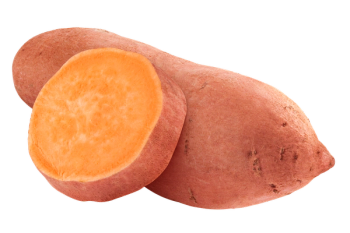
Detecting Melamine Contamination in Citrus Juices Using HPLC
A study investigating the presence of melamine contamination in commercial citrus juices conducted quantification of melamine concentrations in triplicate utilizing a high performance liquid chromatography (HPLC) system.
A joint study betweenShiraz University of Medical Sciences (Shiraz, Iran), Iran’s Ministry of Health and Medical Education (Tehran, Iran), and the Tehran University of Medical Sciences (Tehran, Iran) investigated the occurrence of melamine in commercial citrus juices and estimated dietary exposure among different demographic groups to assess potential health risks. The researchers used high performance liquid chromatography (HPLC) to evaluate melamine in the citrus-based juices. A paper based on their work was published in Food Chemistry: X (1).
A white crystalline powder with moderate solubility in water, with a crystalline structure made up mainly of nitrogen, melamine is widely used in the production of various plastics, resins, coatings, industrial filters, adhesives, and specific types of containers. Food can be contaminated by melamine through its contact with packaging materials, kitchen utensils, adhesives, coatings, pesticides and herbicides, sanitizers and disinfectants, and water contamination, and this corruption poses substantial food safety risks (2). Melamine is absorbed in the digestive tract and forms crystals in the kidneys, which can lead to the formation of kidney stones as well as renal failure (3). Melamine has also been identified as a cause of male reproductive toxicity in animals (4).
Citrus fruits are renowned for their high nutritional value, particularly their abundant vitamin C content. They are rich in bioactive compounds like carotenoids and flavonoids and provide essential vitamins, including B vitamins, thiamine, riboflavin, niacin, folic acid, inositol, biotin, and choline (5). Citrus juices are not immune to contamination despite the nutritional benefits they provide, and the risk of melamine contamination to vulnerable consumers, such as children and the elderly, is a significant public health concern (6).
In this study, the researchers selected the juice of two citrus fruits, lemons and oranges, to determine the amount of melamine. Commercial juice samples were randomly selected from different brands and packaging, focusing on the packaging materials. Five different brands were selected. The selected samples were usually filled in a similar manner in 280 ml containers for individual consumption. The samples had higher consumption and a higher market share. To maintain confidentiality and avoid any bias in the test results, the brand names were not identified, and the samples were coded alphabetically (1).
The researchers report that the amount of melamine in orange juice was higher than in lemon juice, and different amounts were seen in different brands. Furthermore, their study considered the effect of the type of packaging on the amount of melamine in the juice contained. The highest melamine levels were found in the cardboard packaging, which is commonly used for its renewability and cost-effectiveness(1). The lowest amount of melamine was observed in can packaging, which is typically made from metals like aluminum (7,8). Though no risks were calculated for the two age groups of elderly adults and children, the study's authors emphasize the importance of monitoring melamine levels in commercial juices (1).
References
1. Rashedinia, M.; Akbari-Adergani, B.; Shavali-Gilani, P.; et al. Concentration and Health Risk Assessment of Melamine in Commercial Citrus Juices. Food Chem. X 2025, 26, 102254. DOI:
2. Alizadeh, A. M.; Hosseini, H.; Hosseini, M. J.; et al. Melamine in Iranian Foodstuffs: A Systematic Review, Meta-Analysis, and Health Risk Assessment of Infant Formula. Ecotoxicol. Environ. Saf. 2023, 256, 114854. DOI:
3. Rovina, K.; Siddiquee, S. A Review of Recent Advances in Melamine Detection Techniques. J. Food Compos. Anal. 2015, 43, 25-38.DOI:
4. Chang, L.; Lu, Z.; Li, D.; et al. Melamine Causes Testicular Toxicity by Destroying Blood-Testis Barrier in Piglets. Toxicol. Lett. 2018, 296, 114-124. DOI:
5. Kowalska, M.; Konopska, J.; Feszterová, M.; Zbikowska, A.; Kowalska, B. Quality Assessment of Natural Juices and Consumer Preferences in the Range of Citrus Fruit Juices. Appl. Sci. 2023, 13 (2), 765. DOI:
6. Zhu, H.; Kannan, K. Melamine and Cyanuric Acid in Foodstuffs from the United States and their Implications for Human Exposure. Environment International 2019, 130, 104950. DOI:
7. Chuchot, N.; Thanakijkasem, P. Production Optimization of Premium Food Can with Distortion Printing Under Waving Requirement. Appl. Sci. 2024, 14 (16), 7399. DOI:
8. Önen, R. Characteristic Properties and Recyclability of Aluminium Beverage Cans and Coffee Capsules (Master's Thesis, Izmir Institute of Technology [Turkey]) 2022.
Newsletter
Join the global community of analytical scientists who trust LCGC for insights on the latest techniques, trends, and expert solutions in chromatography.





